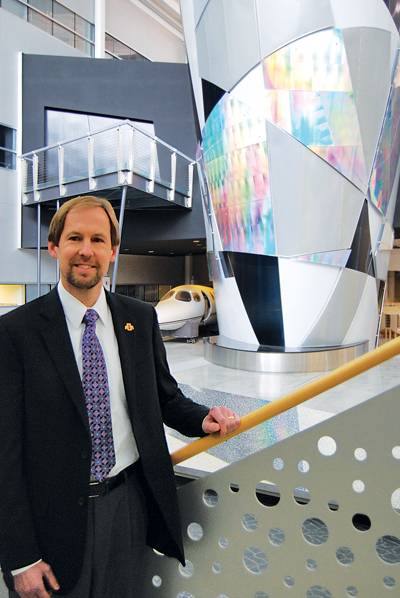Delegation to India returns to Iowa
February 26, 2013
Upon the return of a recent two-week delegation to India, opportunities abound for both the state of Iowa as well as for its three Regents universities, including Iowa State.
Mufit Akinc, interim dean of the College of Engineering, one of the delegates to India, was quick to note that all developments in regards to future partnerships with India are in preliminary stages.
“I think this [trip] was almost fact-finding for us, and not all of the facts are in yet. We’re still going to be having conversations and having more back-and-forth communications to see what are the real opportunities for us, as well as for both sides to benefit,” Akinc said.
A measured approach has been undertaken, curtailing any certain plans for the time being. Some ideation has been developed, though, in terms of what a partnership with India could lead to.
“There are a number of organizations that do development work across India, whether it’s water quality or nutrition, health policy or agriculture to help small villages build themselves up,” said Jonathan Wickert, ISU senior vice president and provost who was also an India delegate.
Wickert said students could have the ability to contribute to these efforts.
“We see opportunities for [ISU] students to go over on internships, if you will, and be involved,” Wickert said.
Akinc also said he sees practicality in an India-Iowa relationship by means of modified student exchange programs, allowing ISU students further opportunities to study internationally.
These programs would be “not as much of semester-long students coming and going; maybe more of a short trip, a few weeks to a month or a month and a half at most that would not coincide with the semester,” Akinc said.
Akinc also emphasized how international study, perhaps in India, fits in well with what the College of Engineering desires in its students.
“We are interested in having our graduates to have an international perspective from experience,” Akinc said.
With plenty of education-based opportunities currently being mulled over, other opportunities could also be in play for the state of Iowa as a whole.
“Provost Wickert is going to transmit our impressions and suggestions from Iowa State to the Board of Regents, and the other Regents universities [that were represented in India] are going to be doing the same thing,” Akinc said.
Much of this information, in turn, will be further relayed to Iowa Gov. Terry Branstad, who could perhaps organize a second trip in the fall.
Current details are scarce on what exactly could come as a result of Iowan governmental partnership with India, though Wickert sees similarities in Iowa’s interests with China to Iowa’s interests with India.
“The governor has shown an interest in having trade relationships and business relationships with China. India is another important country where it may make sense for the state of Iowa to have some engagement,” Wickert said.
One particular visit on the delegation demonstrated instances of how India and Iowa share some similarities and could foreseeably lead to future partnership.
“We visited a university in northern India in a region of the country [Punjab] that is similar to Iowa in the sense that it’s a very agricultural region. There’s strong interest in having some collaborative research projects in plant genetics, for instance, to help that region improve its agricultural production,” Wickert said.
Developments with Punjab, just like other developments between the state of Iowa and India, are largely hypothetical at the moment. More concrete details are expected to surface in the coming months.
A lack of concreteness does not detract from the optimism felt on what could become a promising relationship with one of the world’s fastest-growing nations.
“We came back very excited with a lot of ideas, and now the next step is really to identify the ones that are going to have the highest returns and can be successful and sustained,” Wickert said.

















